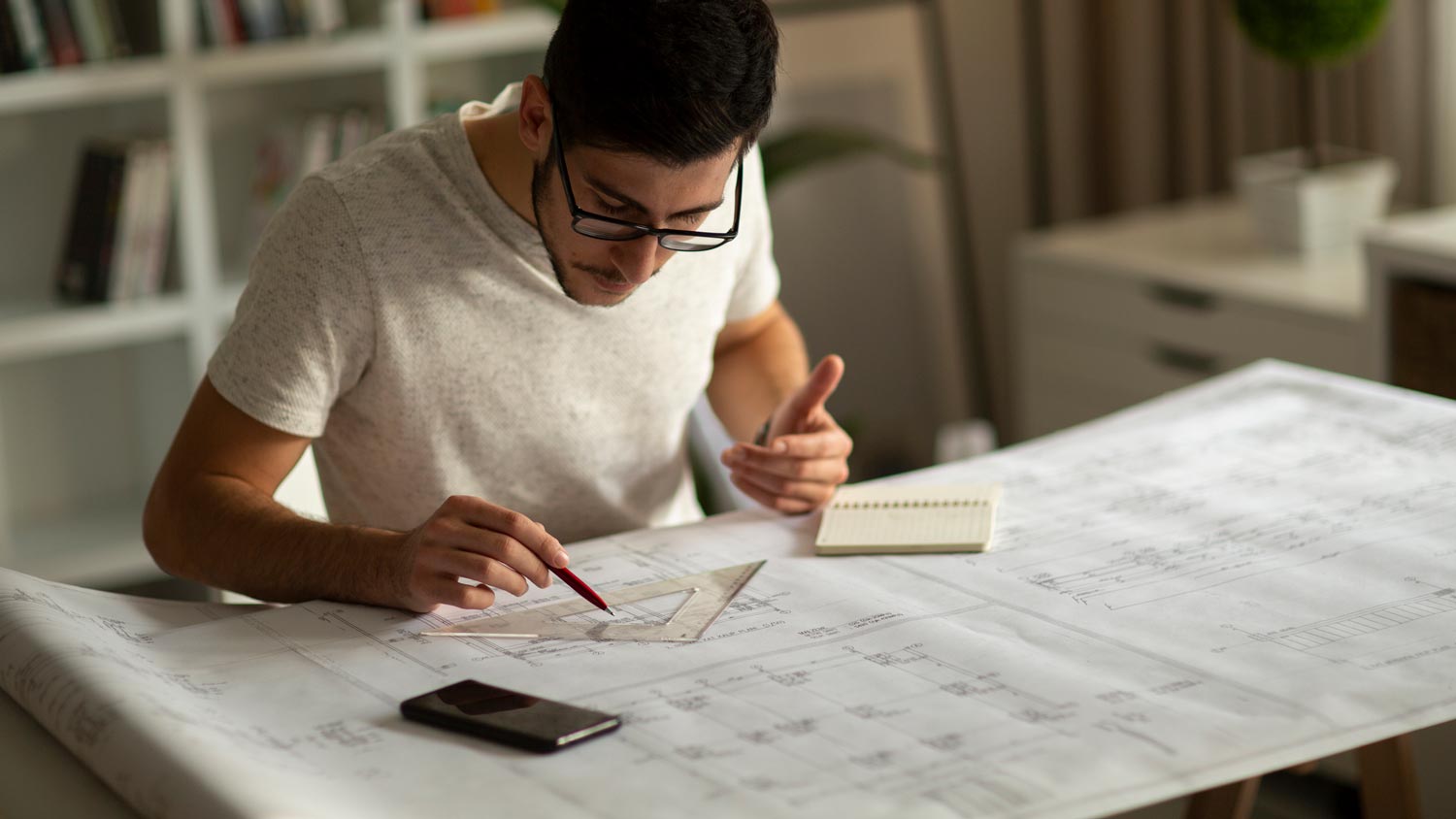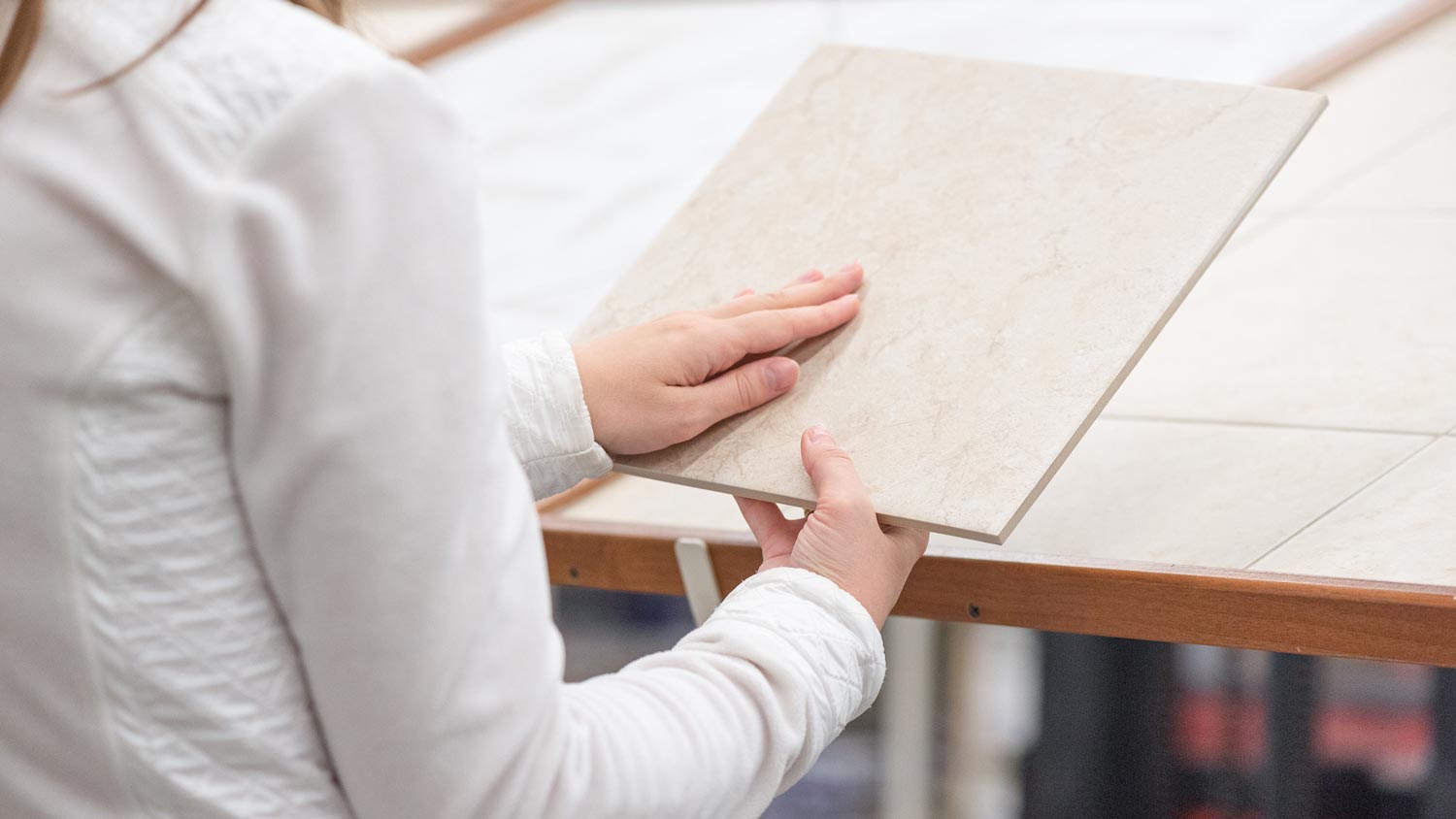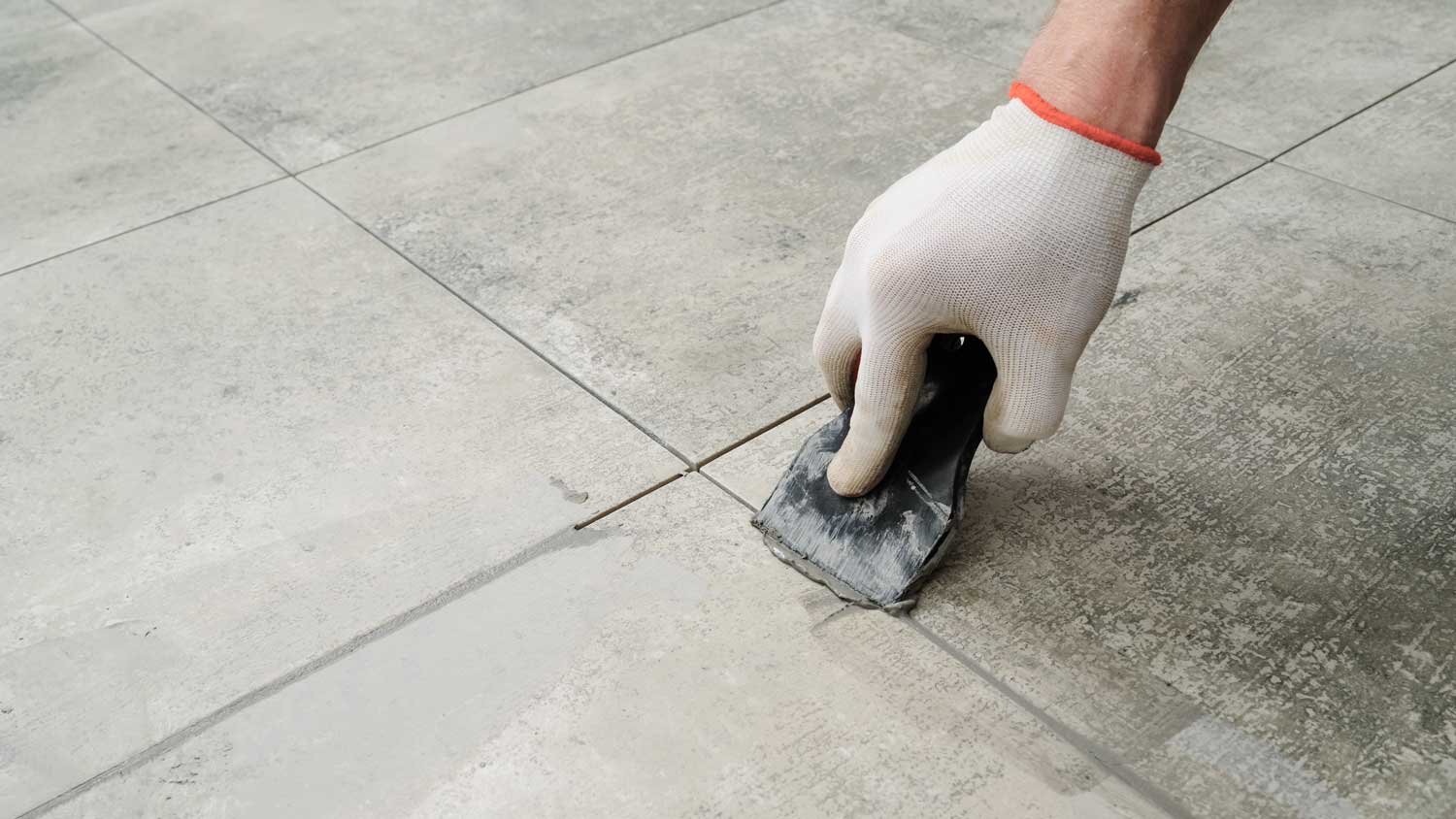
The cost to install porcelain tile depends on materials, size, and whether you DIY or hire a pro. This guide will help you choose the perfect porcelain tile for your home and budget.
Let’s take a trip down memory lane—to high school geometry


Whether tackling it yourself or hiring a professional, installing tile can be time-consuming. If you’re doing the work yourself, understanding how to measure square feet for tile can help make the project go more smoothly. Plus, accurately accounting for the total amount of tile plus waste will allow you to order your tiles and complete the project as quickly as possible. This handy DIY guide will explain why square footage measurements are essential and how to measure for them.
Square footage is the total area of a room or a space. Often, you’ll see square footage on home listings to show how big a home is or how much living area it has. The total square footage of the home is the sum of the square footage of each room. When measuring for tile, measuring the square footage of the area you’re covering will allow you to get as close as possible to the amount you’ll need when you start the project.
Tile installation cost depends on the size of the room, the amount of tile needed, the cost of the tile, and the cost of labor if you have it professionally installed. The average cost to complete a tile installation project is $2,000, but it can cost as little as $400 and as much as $6,000.
If you complete the project yourself, you have to account for any tiling tools and supplies you need too, which can include a notched trowel, tiling sponge, wet saw, utility knife, and rubber grout float, plus the cost of supplies like adhesive, grout, and the tile itself.
Other factors that impact the cost, whether you’re doing the project yourself or hiring a tile installation professional near you, are the size of the area you’re tiling, the amount of site prep needed, and the type of tile you’re installing.
Measuring square footage is a relatively simple project, but it does require some math and a few tools. If you can remember back to high school geometry—yes, you actually get to use high school math—you’ll be using the formulas to find the area of a square or rectangle and maybe a triangle or circle depending on the shape of your room. Don’t worry if you don’t remember them—we’ve got you.
You’ll need a tape measure or laser distance measurer, paper, a writing utensil, and a calculator. You can also use an online square footage calculator to make things even easier.
When you decide to install ceramic tile or upgrade an old backsplash, understanding how to measure square feet for tile will allow you to order what you need to complete the project.

One of the best ways to keep track of your measurements is to draw a rough sketch of the room. Don’t worry if you’re not artistically inclined! It doesn’t have to be pretty or to scale, but making it roughly proportional can help you label it accurately. Once the room is sketched, you can decide which formulas to use.
The most straightforward shapes to calculate square feet for are squares and rectangles. So, if you have an irregularly shaped room, especially one that is L-shaped or has a square or rectangular nook, you can draw a line on your sketch to break it down into squares or rectangles.
Use the formula for a square or rectangular room:
Length x Height = Sq. Ft.
So if a room is 10 feet by 10 feet, you will multiply the two numbers together to get the total area of the room—100 square feet. That was an easy one, but you get the idea. We’ll talk about what happens when a room doesn’t have an exact number of feet, and you have to deal with inches in a few minutes.
For a circular room or area, use the following formula:
Radius (measured from the center of the circle to the outside edge) x ℼ (3.14)
If a circular room measures 25 feet across (the diameter), its radius is 12.5 feet. To make this formula work, you must convert the feet into inches by multiplying it by 12. So, 12.5 feet times 12 inches per foot equals 150 inches. Multiply 150 inches by 3.14 to get the total area of the circle—471 square feet.
For a triangular room or area, use the following formula:
Base x Height
___________
2
If a triangular room has a base of 10 feet, 6 inches and measures 12 feet from the base to the furthest point, you’ll start by converting feet to inches. Multiply 126 inches by 144 inches to get 18,144. Then divide that number by two to get the total area of 9,072 inches. Finally, divide that number by 144 (the number of inches in one square foot) to get the total square footage of 63 square feet.

The planning stage is done, now it’s time to get out that tape measure or laser distance measurer and start measuring. To get an accurate square foot calculation, you’ll want to measure in inches, converting any measurements in feet to the smaller unit. For instance, if your room is 15 feet, 6 inches long, you would convert the feet to inches by multiplying the number of feet by 12 and then add in the leftover inches. So, 15 feet, 6 inches will equal 186 inches.
Measure each side of the room, convert the measurement to inches, and write the number on your sketch.
Once all the measurements are taken, you can calculate the total square feet in the room that will need to be tiled. To do this, find the area of each shape that makes up the room. If the room is a square or rectangle, this is pretty easy.
Multiply the length of the room times the width
Divide the total by 144 (the inches in one square foot)
Example:
Length: 15 feet, 6 inches (186 inches)
Width: 20 feet, 6 inches (246 inches)
186 inches x 246 inches = 45,756 inches
45,756 inches / 144 inches = 317.75 square feet
For a room with an irregular shape, you’ll use the same method but use either the formula for a circle or for a triangle. Calculate the square feet of each section and then add the total together.
If you’re tiling a wall and need to go around a window or door, find the total square footage of the wall and then subtract the square footage of the window or door that won’t need to be tiled.
You’re almost done, but now it’s time to think about waste. When you install tile, you’ll need to cut some pieces to size, and there’s always a chance that you’ll make the wrong cut or that a tile will break throughout the installation process. To account for these scenarios, you should calculate waste into the total amount of tile you buy. It’s recommended to buy an additional 10% to 15% of the total tiles you’ll need to cover any waste or breakage.

So now you’ve made all your measurements and are looking at a number that theoretically tells you the amount of tile that you need—317.75 square feet worth, in our scenario. But when you start looking for tiles, you’ll see a variety of measurements. The amount of tile that comes in a box can be measured in pieces, in square feet, or by the box or case. This can prove incredibly confusing.
Luckily, many home improvement sites include a calculator that will do the conversion for you. You simply enter the number of square feet you’ll be tiling, and it will tell you how much to order and the total you’ll pay. There’s also typically a box you can check if you want to include waste into the total amount of tile.
Draw your sketch as accurately as possible. However, it doesn’t have to be perfectly to scale. Mark any areas that won’t be tiled.
If you’re tiling a wall with a window or a door, subtract that area from the total tile needed. Make sure to calculate the square footage of the door or window (or both) and deduct that from the total.
Make sure you’re converting all measurements to inches.
Have a helper to hold the other end of the tape measure and maybe another to mark down measurements.
Add 10% to 15% for waste, which, while it will add to the cost of installing a tile floor, will ensure you have enough materials to cover the space.
From average costs to expert advice, get all the answers you need to get your job done.

The cost to install porcelain tile depends on materials, size, and whether you DIY or hire a pro. This guide will help you choose the perfect porcelain tile for your home and budget.
.jpg?impolicy=leadImage)
Sealing your grout goes a long way toward extending its life span. This guide breaks down the cost factors for sealing grout, including size, materials, and labor.

Discover the average cost of grout repair, key price factors, and tips to save. Get expert advice to plan your grout repair project with confidence.

Want that kitchen or bathroom makeover without ripping your tiles out? We'll show you how to paint tile and level up your redecorating game.

Looking for new bathroom tile to freshen up your space? Use this guide to find the best tile for your bathroom floor for appearance, longevity, and durability.

Discover the differences between epoxy grout versus cement grout and choose the best option for your tiling project. Learn about pros, cons, and ideal uses.